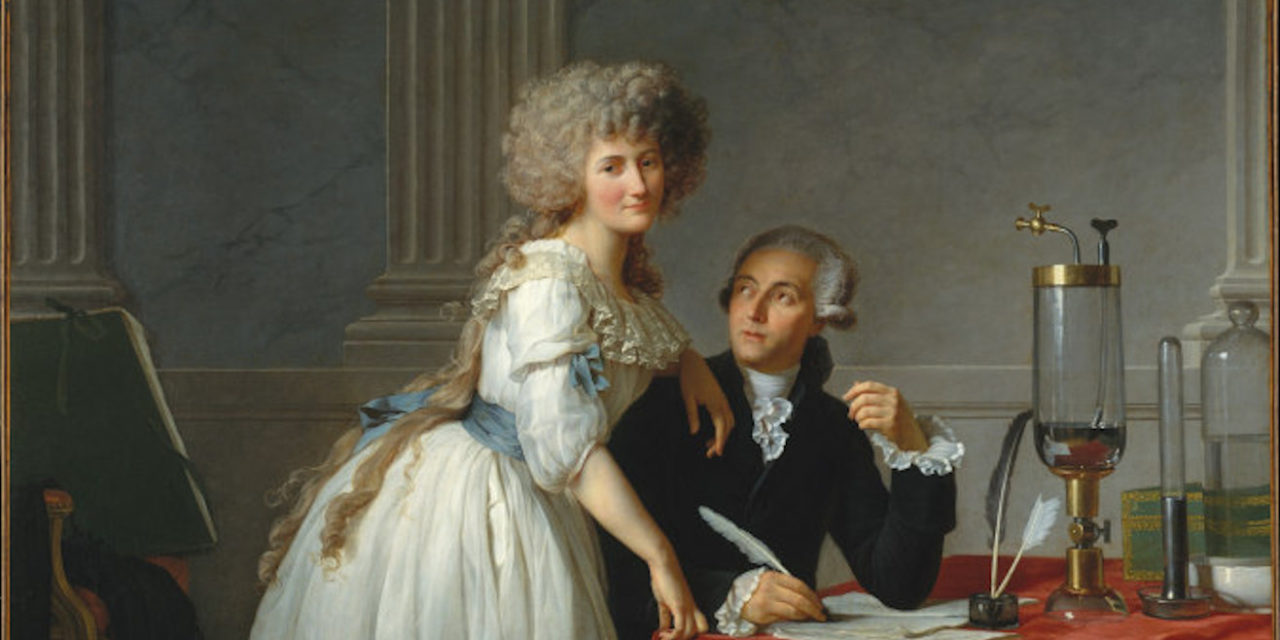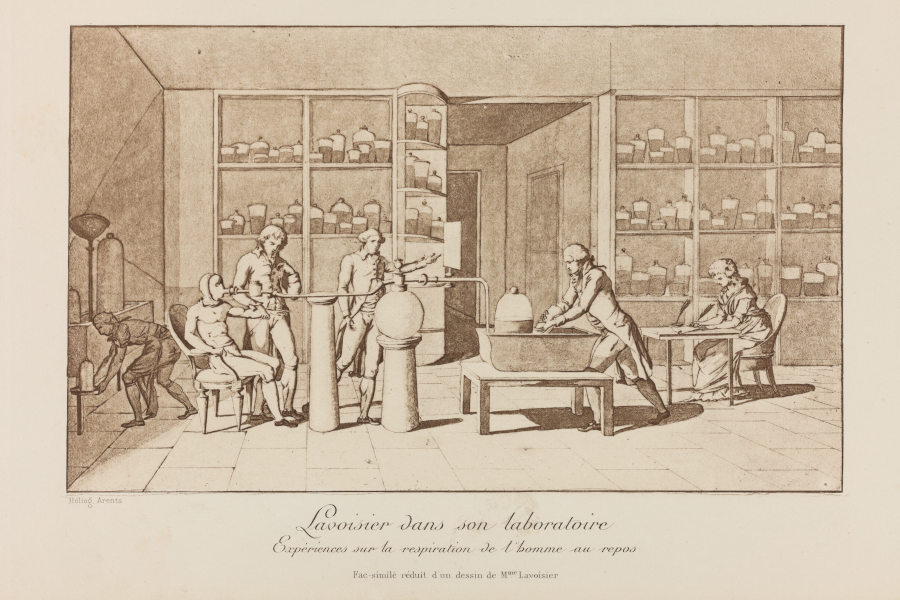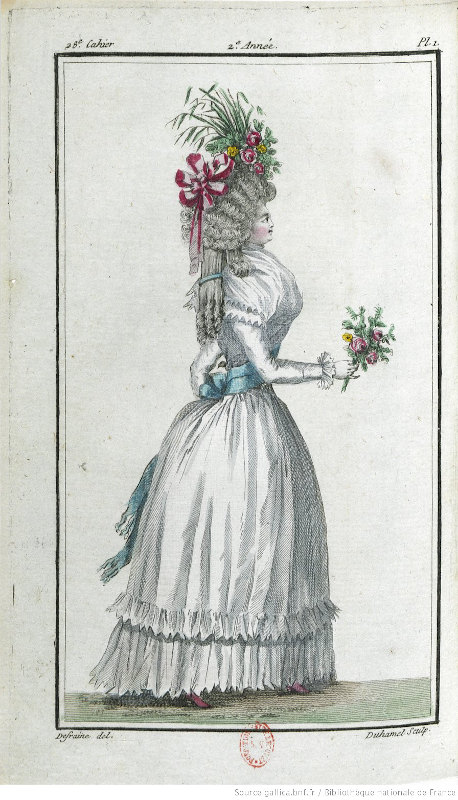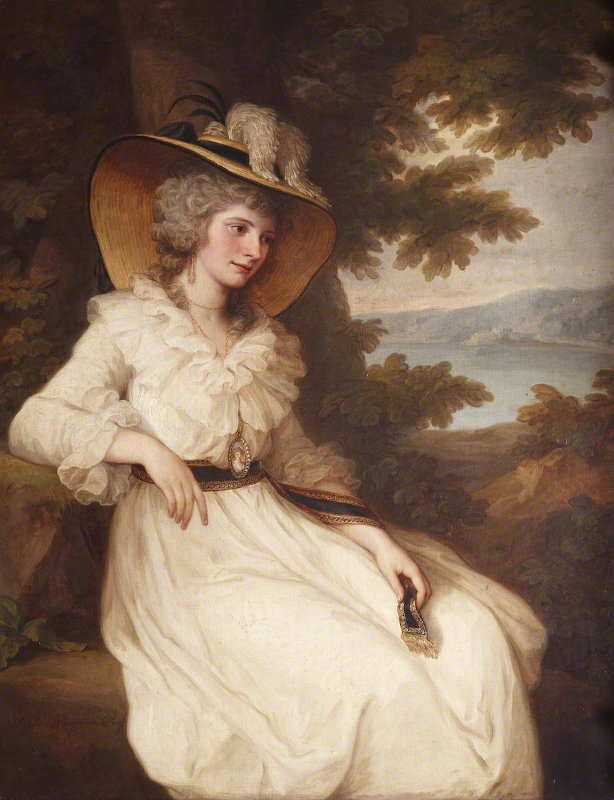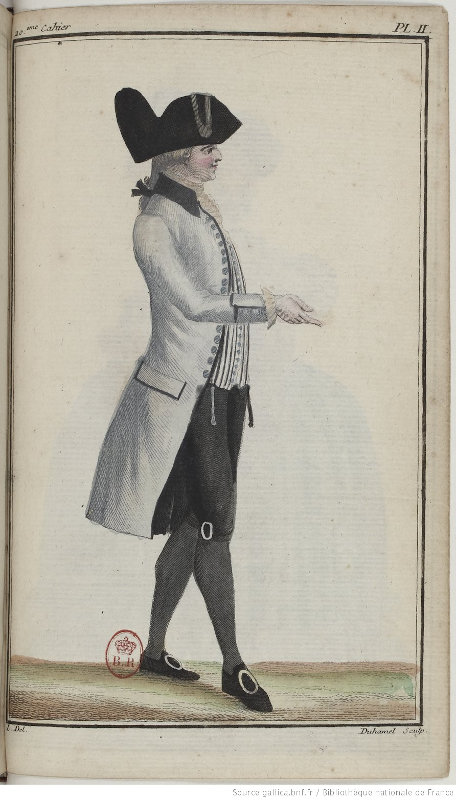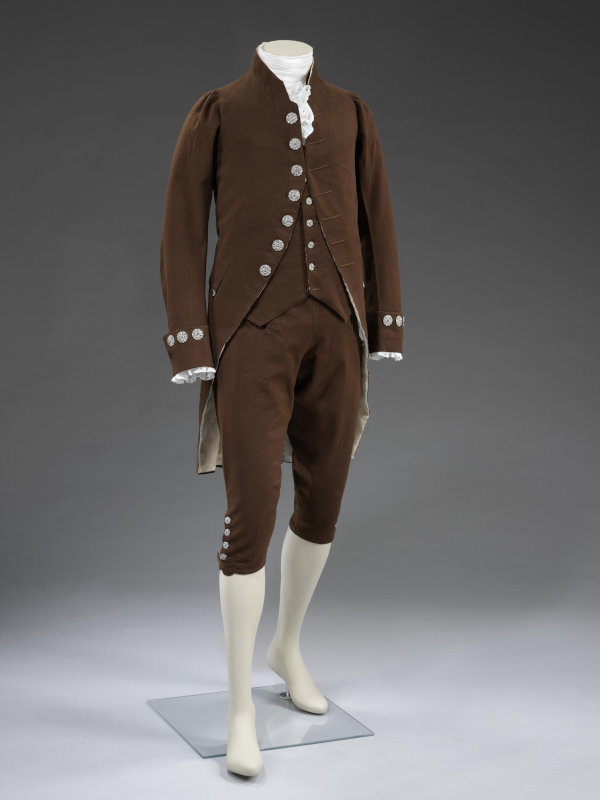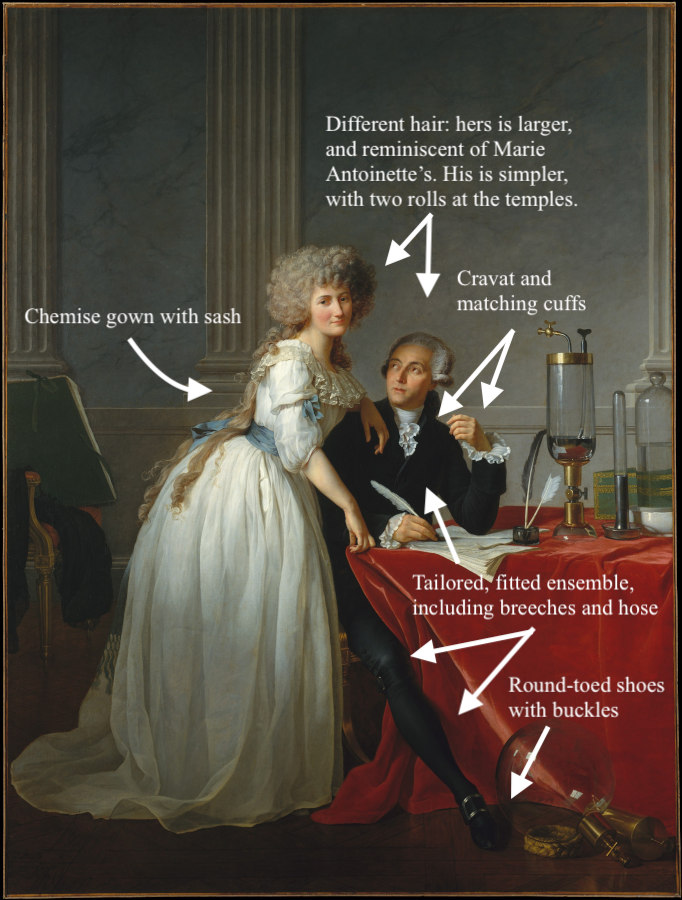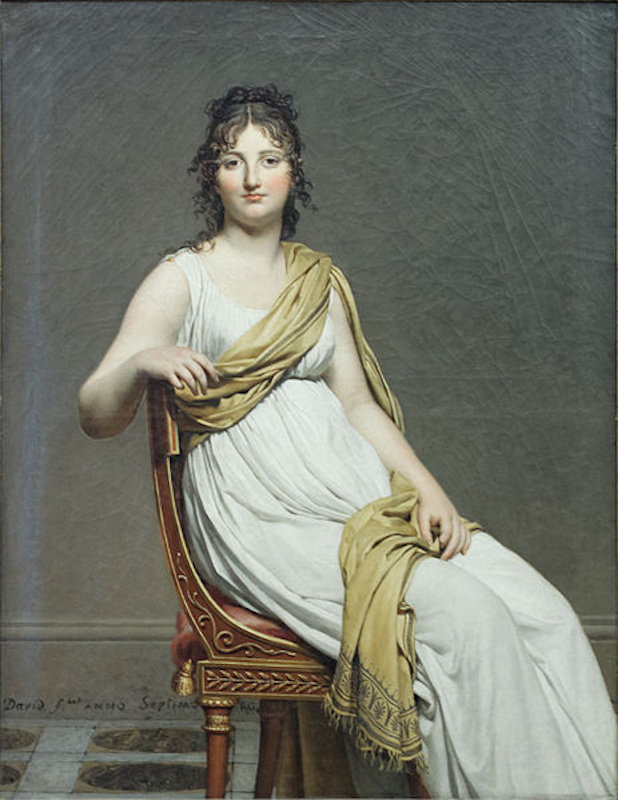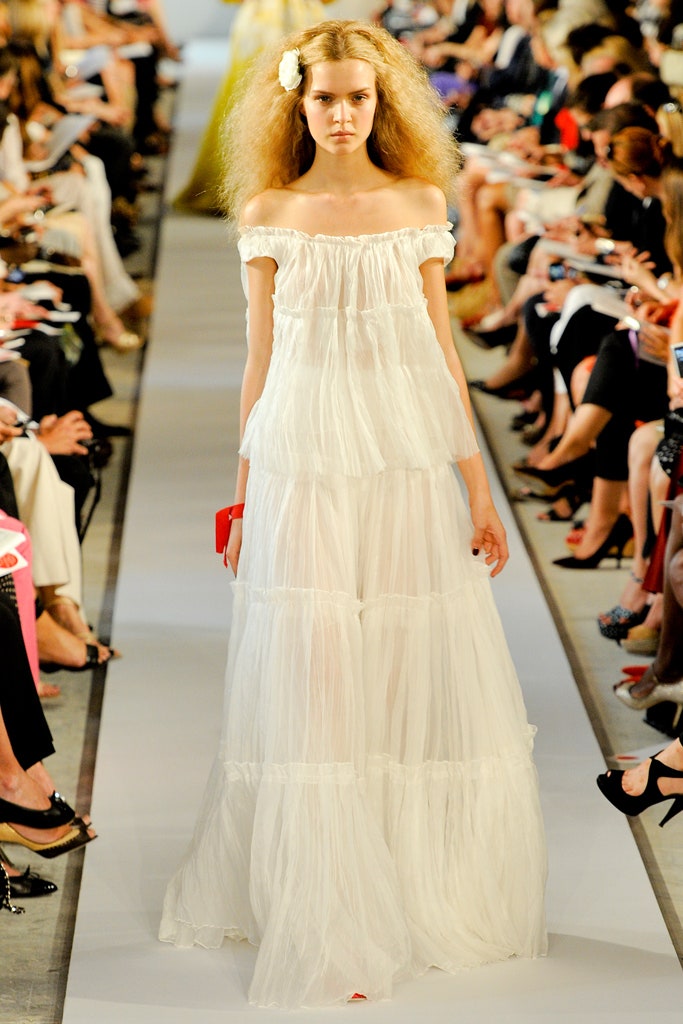Jacques-Louis David painted famed scientist, Antoine-Laurent Lavoisier, and his wife, Marie-Anne Pierrette Paulze, in 1788. This dual portrait was commissioned by Lavoisier and is executed in the neoclassical naturalism for which David is best known. Both are dressed in the latest fashions, embracing simplicity (in Paulze’s case) and somber restraint (in Lavoisier’s).
About the Portrait
The double portrait, Antoine-Laurent Lavoisier (1743–1794) and Marie-Anne Lavoisier (Marie-Anne Pierrette Paulze, 1758–1836), depicts Lavoisier, a tax collector and scientist, and Paulze, his collaborator and a pupil of David. Lavoisier sits at a table, a bevy of scientific instruments in front of him and at his feet, quill in hand. He looks up at Paulze, who stands over him, her arm draped on his shoulder, her attention turned out towards the viewer. Her large green drawing portfolio is visible to the left, resting on a chair. David’s Neoclassical style connects them to the Enlightenment, and solidifies their position as forward-thinking intellectuals.
Lavoisier was noted for his contributions to the sciences, including discovering oxygen and determining the chemical composition of water (The Met). Paulze played an indispensible role by creating detailed illustrations to accompany his publications, as well as translating books and articles from English to French for him. An 1888 print of one of Paulze’s illustrations shows the couple at work in their laboratory (Fig. 1). She depicts Lavoisier carrying out an experiment on human respitation, and shows herself sitting at a nearby desk, presumably taking notes.
Fig. 1 - Édouard Grimaux (French, 1835-1900). Lavoisier dans son laboratoire: Experiences sur la respiration de l'homme au repos, after Mme. Lavoisier, 1888. Ithaca: Division of Rare and Manuscript Collections, Cornell University Library, RMC2012_0455. Source: Cornell University Library
Recent analysis of David’s portrait revealed that initially, the Lavoisiers were portrayed much differently. The scientific instruments were a later addition, and Paulze wore a large hat, which would have been in keeping with fashion at the time. Such a depiction “emphasized […] their status as wealthy tax collectors,” as opposed to their profession as scientists (The Met). Though ultimately appearing as a restrained, yet fashionable, couple dedicated to science, Lavoisier’s occupation as a tax collector meant that the couple was part of the ancien régime. With the advent of the French Revolution, their social status prevented this portrait from being displayed at the Paris Salon of 1789, along with a number of David’s other works; the Academy of Painting feared that his paintings, including this portrait, were too political and would incite violence (Donovan 273).
Jacques Louis David (French, 1748–1825). Antoine-Laurent Lavoisier and Marie Anne Pierette Paulze, 1788. Oil on canvas; 259.7 x 194.6 cm (102 1/4 x 76 5/8 in). New York: Metropolitan Museum of Art, 1977.10. Purchase, Mr. and Mrs. Charles Wrightsman. Gift in honor of Everett Fahy, 1977 . Source: The Met
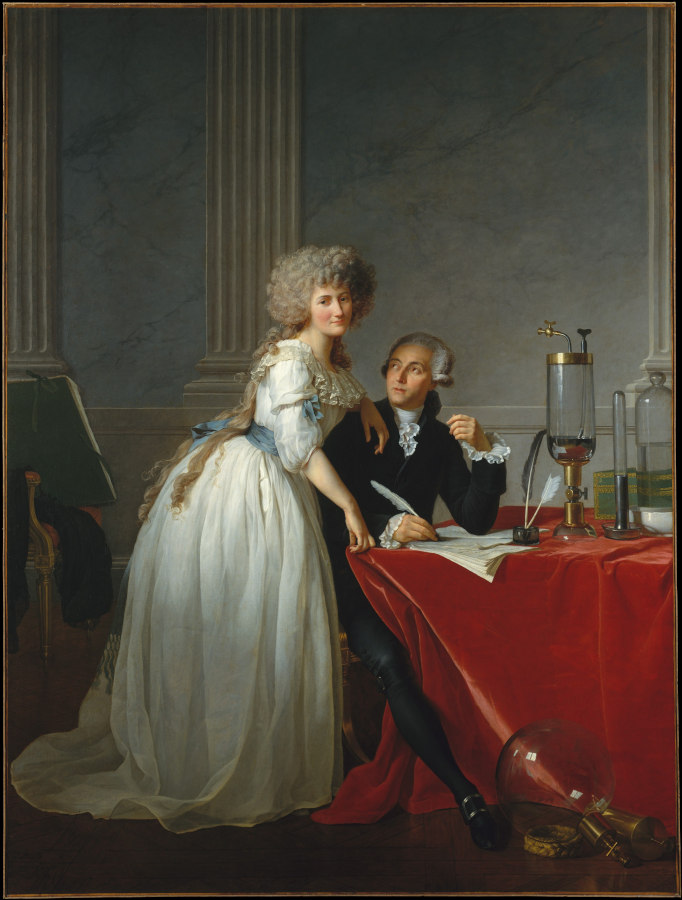
About the Fashion
Marie-Anne Pierette Paulze wears a white muslin chemise gown with a blue sash, which sits at her natural waist. The visible sleeve is decorated with a blue bow, possibly to fasten it above the elbow, which would be convenient for working in the Lavoisiers’ laboratory. The neckline of her dress is decorated with lace flounces, not unlike her husband’s cravat. The skirt of her dress balloons outward and ends in a slight train. Her hair is curled and dressed, but only loosely; a few locks have uncurled and fall freely down her back.
This style was infamously worn by Marie Antoinette in a 1783 portrait by Vigée Le Brun (Fig. 2). When worn by the Queen of France in Vigée Le Brun’s painting, critics had two routes of attack: not only was the dress considered too informal for public display, but it was also made of cotton, as opposed to French Lyonnaise silk (Steele 39). The painting was withdrawn from the Salon, but the chemise à la reine withstood criticism, and became the dominant style through the end of the 18th century.
A similar ensemble can be see in a 1787 fashion plate from the Magasin des modes nouvelles (Fig. 3). The fashion plate depicts a woman wearing the same style of gown, though with longer sleeves, a shorter hem, and a fichu. Angelica Kauffman’s 1786 portrait of Lady Elizabeth Foster provides another view of the chemise dress (Fig. 4). Foster’s white muslin dress is accented with a black and gold sash around her waist, long sleeves that end in cuffs just above the wrist, layers of fabric along the neckline, and an ostrich-feather-plumed straw hat.
As Hill says, the chemise dress “was revolutionary in its simple lines and construction” (443). The light fabric and sash at the natural waist gave it a soft appearance, and set it at odds with older fashions, such as the robe à la française and the robe à l’anglaise. Though the latter was not as formal, or necessarily as structured, as the latter, both relied upon multiple pieces of clothing for the overall appearance. The robe en chemise, however, was a muslin gown that allowed the wearer’s body to be “defined rather than reshaped by clothing” (Hill 443).
Antoine Lavoisier demonstrates the new masculine silhouette of the 1780s. His hair is powdered and pulled back from his face, with two small rolls at the temples. His coat and breeches are cut so as to be form-fitting, while his hose emphasize the shape of his calf. Excavations at Pompeii and Herculaneum prompted a renewed interest in antiquity, and a classical appreciation for the male form was echoed in tight-fitting jackets paired with breeches and hose. The modest coloring and relative simplicity of Lavoisier’s garments contrast against the bright colors and elaborate embellishment common earlier in the century, further strengthening his appearance of an intellectual who, though stylish, was not consumed by fashion. Hill describes menswear:
“The harmonious truth of the masculine anatomy as defined and expressed by Neoclassical aesthetics was delineated in cloth–sculpted according to the principles of the tailor’s craft. By the end of the eighteenth century, men’s clothing was designed to suggest a youthful, athletic male build with a broad chest and shoulders, a small tapered waist, a flat abdomen, and long, slender legs.” (434)
Lavoisier accessorizes his ensemble with a lace cravat and cuffs. The standard round-toed shoes with buckle complete his outfit in modest elegance. A 1786 fashion plate from Cabinet des modes demonstrates how Lavoisier’s outfit might look from another angle (Fig. 5), and an extant example provides a clear view of the cut and overall shape of 1780s menswear (Fig. 6).
Fig. 2 - After Élisabeth Louise Vigée Le Brun. Marie-Antoinette, After 1783. Oil on canvas; 92.7 x 73.1 cm (36 1/2 x 28 3/4 in). Washington DC: National Gallery of Art, 1960.6.41. Timken Collection. Source: NGA
Fig. 3 - François Buisson (French, 1753-1814). Fashion Plate from Magasin des modes nouvelles, françaises et anglaises, no. 27, August 10th, 1787. Paris: Bibliothèque Nationale de France. Source: BnF
Fig. 4 - Angelica Kauffman (British, 1741-1807). Lady Elizabeth Foster, 1786. Oil on canvas; 127 x 101.5 cm (50 x 40 in). Ickworth: National Trust, 851738. Accepted in lieu of tax by HM Treasury and transferred to the National Trust, 1956. Source: National Trust
Fig. 5 - François Buisson (French, 1753-1814). Plate II - Cabinet des modes, no. 20, September 1st, 1786. Paris: Bibliothèque Nationale de France. Source: BnF
Fig. 6 - Designer unknown (French). Suit, ca. 1780. Wool, lined with silk and linen, with cut steel buttons. London: Victoria and Albert Museum, T.10:1 to 3-2010. Purchased at auction from Thierry de Maigret, at Hotel Drouot, Paris, 12 June 2009, lot 23.. Source: The V&A
Its Legacy
T
oday, of the many society portraits executed by David during his career, Antoine-Laurent Lavoisier and Marie-Anne Lavoisier is remembered as a vision of aristocratic life on the cusp of a bloody revolution. Antoine Lavoisier has become known as the “father of modern chemistry,” while Marie-Anne’s career has attracted some scholarly interest.
The influence of the chemise gown on fashion is, without a doubt, revolutionary. The design relied on a simple elegance and an appreciation for the natural female form. Through the Revolution and into the Napoleonic era, the chemise dress took on more Neoclassical tones, culminating in simple, straight-lined gowns, such as the one seen in David’s portrait of Madame de Verninac in 1799 (Fig. 7).
In the modern age, the style of the muslin white gown has been emulated by countless modern designers. Oscar de la Renta’s 2012 collection in particular emphasized the boundless comfort associated with the muslin chemise at the time of its inception (Fig. 8).
Fig. 7 - Jacques Louis David (French, 1748-1825). Portrait de Madame de Verninac, 1799. Oil on canvas; 145.5 x 112 cm (57.2 x 44 in). Paris: Louvre, RF 1942-16. Bequeathed by Carlos de Beistegui, 1942. Source: The Louvre
Fig. 8 - Oscar de la Renta. Look 61, Spring/Summer 2012. Yannis Vlamos. Source: Vogue
References:
-
Brookner, Anita. Jacques-Louis David. New York: Harper & Row, 1980.
- Hill, Daniel Delis. “The Eighteenth Century.” In History of World Costume and Fashion, 423-455. Upper Saddle River, NJ: Pearson Prentice Hall, 2011.
- Donovan, Arthur. Antoine Lavoisier: Science, Administration, and Revolution. Cambridge: Cambridge University Press, 1999.
- “Jacques Louis David | Antoine-Laurent Lavoisier (1743–1794) and His Wife (Marie-Anne Pierrette Paulze, 1758–1836).” The Collection Online. Accessed October 12, 2020. https://www.metmuseum.org/art/collection/search/436106
- Steele, Valerie. Paris Fashion: A Cultural History. New York: Bloomsbury, 2017.

